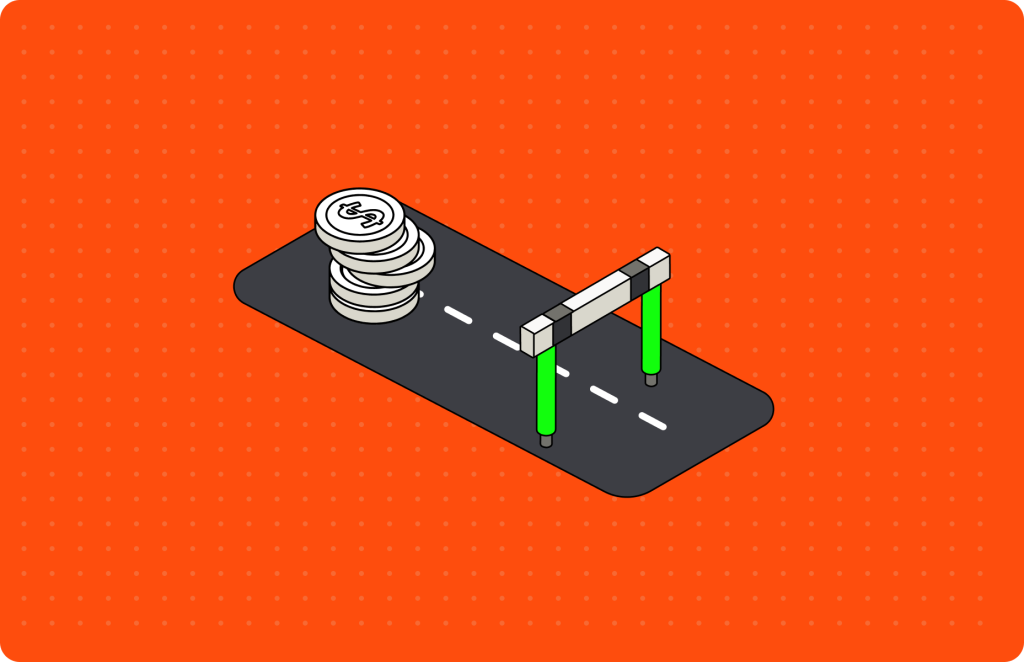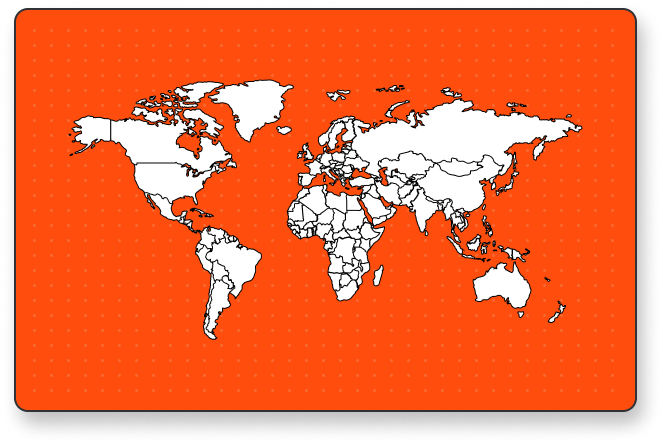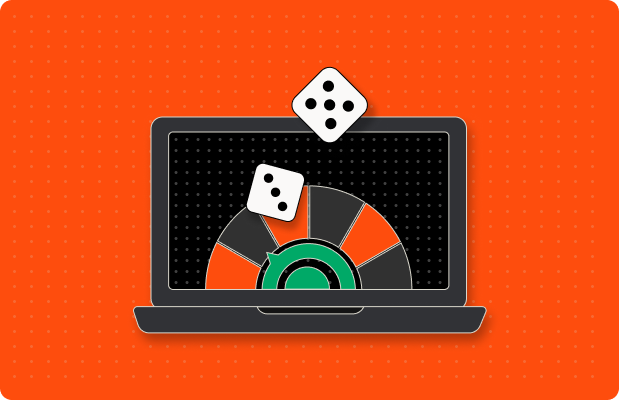Brokerage Business
10 minutes read
Jul 15, 2025
Understanding the Brokerage Technology Stack: Guide to Scale Your Business
If you’re building or scaling a brokerage, especially in today’s ultra-competitive brokerage environment, whether forex, crypto, or multi-asset, your chosen technology stack will either accelerate your growth or choke your operations.
This comprehensive guide breaks down each component you need to build a scalable brokerage enterprise. You’ll discover how to select the right technologies, avoid costly mistakes, and develop systems that evolve with your business growth.
Core Components of a Brokerage Technology Stack
Trading Engine
Your trading engine processes all of your orders that flow through your brokerage. Without a solid system in place, you’re essentially grounded before takeoff.
- Order Management Systems (OMS) control the entire life cycle of each trade from beginning to settlement. Modern OMS systems connect with many exchanges, provide real-time tracking of orders, and offer sophisticated routing capabilities. You need systems that can process thousands of orders per second without compromising speed and precision.
- Execution Algorithms control how your orders get into the market. Smart order routing algorithms can significantly boost fill rates and reduce slippage for your clients. These systems analyze market conditions, liquidity, and timing to optimize trade execution on multiple venues.
- Risk Management Tools protect your business and customers from possible catastrophes. Real-time position monitoring, stop-losses on automatic, and margin calculation prevent excessive exposure. Advanced systems will also detect abnormal trading patterns and impose circuit breakers during times of extreme market volatility. Explore our risk management systems guide to understand margin call protocols and circuit breakers in depth.
The trading engine you choose impacts every aspect of your client experience. Slow execution times, system downtime, or poor fill rates will have clients at your competitors’ doors faster than you can say “slippage.”
Customer Relationship Management (CRM)
Your CRM system turns prospects into repeat clients and re-engages existing clients with your services.
- Client Onboarding Platforms make account opening easier. Electronic onboarding condenses the application-to-first-trade timeline from weeks to hours. Automated document collection, identity confirmation, and risk scoring create an effortless process that impresses new clients day one.
- Communication Tools in your CRM remain connected with customers across multiple channels. Built-in email, SMS, and video calling capabilities ensure that you never miss an opportunity to reach out. Automated follow-up processes cultivate leads as customized touches build long-lasting relations.
- Lead Tracking Systems enable you to understand your sales funnel and optimize conversion rates. You can find out which channels generate the highest-quality leads and allocate resources accordingly. Advanced analytics reveal client behavior trends that inform your growth strategy.
The best CRM solutions also seamlessly integrate with your trading platforms to provide a single view of every client’s journey. Integration also removes data silos and provides your team with full context when they are servicing clients.
Compliance and Regulatory Systems
Regulatory compliance is not something the brokerage industry can opt out of – it’s about survival. Your technology stack needs to be able to automate compliance to minimize manual labor and human mistakes.
- KYC/AML Solutions identify and monitor clients for suspicious behavior. Computer-automated screening against global watchlists, politically exposed persons databases, and sanction lists protects your business from regulatory penalties. The systems continually monitor client transactions for patterns that may indicate money laundering or other illicit activity.
- Automation of Reporting produces regulatory reports without human intervention. Daily trade reports, monthly client statements, or annual compliance summaries are available with automated systems ensuring timeliness and accuracy. Missing regulatory deadlines can cost you dearly in terms of fines and reputation.
- Audit Trails capture all activity on your systems. Advanced logging allows you to present evidence of compliance during regulatory audits and act as proof in the event of disputes. Modern systems create uneditable records that satisfy even the most demanding regulations.
Data Management Infrastructure
Your data infrastructure determines how quickly you are able to make informed decisions and respond to evolving markets.
- Real-time Market Data Feeds provide the price information your clients need to make trading decisions. Inaccurate or late data will cost your clients money and damage your reputation. Redundancy and accuracy are provided through multiple data sources.
- Analytics Platforms transform raw data into meaningful insight. You can identify lucrative trading strategies, understand client behavior patterns, and optimize your operations with real metrics. Advanced analytics even predict market trends and client needs.
- Storage Solutions will be required to handle large volumes of transactional data and need quick access times. Cloud storage has scalability and cost-effectiveness, but you need strong security controls to ensure sensitive financial information remains secure.
Front-End Technology Solutions
Trading Platforms
Your trading platform is typically the initial impression your customers have of your technology abilities. A slow, cumbersome, or unreliable platform sends customers to your competition.
- Web-based Interfaces are convenient to use and access. Clients can trade using any internet-enabled computer without the need for software installation. Sophisticated web platforms introduce real-time charts, elaborate order types, and elaborate market analysis tools.
- Mobile Applications cater to the growing number of traders who use mobile phones. Your application must deliver the full functionality, rather than watered-down versions of your website. Biometric verification, push messages, and offline capabilities add to the mobile trading experience.
- Desktop Solutions cater to professional traders who require feature-rich capabilities and personalization. These platforms typically support more sophisticated charting capabilities, algorithmic trading, and multi-monitor capabilities.
The answer is to give a choice without dividing your development efforts. Excellent brokerages offer one excellent platform instead of multiple weaker ones.
Client Portals
Client portals extend the relationship beyond trade execution. Client portals present your entire range of services and keep clients engaged.
- Account Management features allow clients to update personal information, manage funding accounts, and see account statements. Self-service lowers your support load while improving client satisfaction.
- Document Storage provides secure access to tax papers, trade confirmations, and research reports. Customers prefer to have all their financial paperwork in one tidy space.
- Performance Tracking facilities allow customers to view their trading results and comparisons. Portfolio analysis, risk metrics, and performance comparison add value over and above mere trade execution.
User Experience Optimization
The best technology is invisible to users. Your customers must be able to focus on trading, not fighting with your system.
- Interface Design Principles employ clarity and efficiency. Uncluttered design, straightforward navigation, and stable design elements reduce cognitive loads. Every click should have a clear intention, and essential functions for use should be easily accessible.
- Speed and Reliability Factors directly impact client satisfaction. Pages should load quickly, orders should ship soon, and the system should be well-behaved when it gets a surge. Delays of even a fraction of a second will cause clients to lose trading opportunities.
- Customization Capabilities allow customers to tailor the platform to their preferences. Users can reconfigure dashboards, personalize watchlists, and reconfigure chart layouts to operate more efficiently.
Back-End Infrastructure Essentials
Server Architecture
Your server architecture plays a significant role in how well your systems handle load and how easily you can scale operations.
- Cloud or On-premise Solutions both have their benefits. Cloud infrastructure gives you scalability and lower capital costs, but you lose a little control over your equipment. On-premise solutions give you complete control and flexibility, but cost lots of money upfront and require maintenance.
- Scalability Factors are essential as your company expands. Auto-scaling cloud technology is able to manage sudden bursts of trading volume, whereas regular servers may falter in market volatility—scale from the start, not afterthoughts.
- Security Measures safeguard your infrastructure from cyberattacks. Firewalls, intrusion detection systems, and security updates are multi-layered security measures. Network segregation fences off critical systems from potential intrusions.
Database Management
Your database stores all data significant to your business. Poor database design can be a cause of poor performance and inhibited expansion.
- Transaction Processing requires databases optimized for dealing with high-frequency workloads. ACID compliance assures data consistency even in the case of system failure. Indexing and query optimization provide performance while data volumes grow.
- Data Backup Systems protect against data loss by hardware failure, cyber attack, or human error. Automated backups to multiple locations ensure business continuity. Periodic restore checking ensures that your backups will function when needed.
- Performance Optimization involves continuous monitoring and tuning. Database administrators must identify bottlenecks and optimize queries before they impact client experience. Proper capacity planning prevents performance degradation under heavy usage.
Integration Capabilities
Today’s brokerages depend on several specialized systems that work together in harmony. Integration capabilities define the effectiveness of such systems in communicating.
- API Management offers access to your systems and data, which is controlled. Good APIs make third-party integrations possible without compromising on security. API documentation and developer tools make fintech partners interested in integrating with your solutions.
- Third-party Integrations extend your abilities without needing to create everything in-house. Payment processors, market data feeds, and research services integrate through APIs. Choose vendors that have good integration abilities and reliable support.
- Legacy System Integration enables you to modernize in increments without halting operations. Middleware solutions can connect legacy systems with new technologies, allowing phased upgrades rather than disruptive big-bang implementations.
Security and Compliance Technology
Cybersecurity Measures
Banks are under continuous cyber assault by sophisticated attackers. Your security technology must keep pace with evolving threats.
- Multi-Factor Authentication (MFA) provides an additional layer of security on top of passwords. Hardware tokens, biometric authentication, and SMS codes make it significantly more difficult for unauthorized individuals to access it. Modern MFA products blend security and user experience.
- Encryption Protocols secure information in transit and at rest. End-to-end encryption renders intercepted data unintelligible even when intercepted. Regular encryption key rotation and strong cipher suites fend off evolving threats.
- Threat Detection Systems identify and respond to security breaches in real time. Behavioral analysis can detect unusual behavior that may indicate a violation. Automated response systems can quarantine threats before they spread throughout your network.
Regulatory Compliance Tools
Compliance software reduces the burden of regulatory demands while being compliant with complicated rules.
- Automated Reporting generates required filings automatically, without the involvement of human beings. Such systems keep themselves updated with changing regulations and adjust reports accordingly. Automated validation checks detect mistakes before submission.
- Documentation Systems maintains accurate compliance activity records. Audit trails, policy acknowledgments, and training records demonstrate your commitment to regulatory compliance. Automated retention schedules retain documents for the required lengths of time.
- Monitoring Solutions continuously monitors compliance across your organization. Real-time alerts notify you of possible violations before they become regulatory issues. Trend analysis shows areas that need additional training or process improvement.
Scaling Strategies and Best Practices
Growth Planning
Successful scaling requires strategic planning and technology vision. Your growth needs to be supported by your technology stack without complete overhauls.
- Technology Roadmap Development aligns the expenditure of technology with business objectives. Regular review of roadmaps guarantees that your technology development matches your growth plan. Stakeholder input from all departments prevents technology silos.
- Resource Allocation balances short-term needs and long-term vision. Excessively investing in short-term needs decreases future flexibility, while over-engineering for hypothetical future demand is expensive. Figure out the optimal balance for your specific situation.
- Performance Monitoring provides you with early warnings of scaling issues. Capacity planning based on monitored usage trends enables you to forecast demand prior to it occurring. Computerized monitoring alerts you to performance issues before customers complain.
Common Pitfalls to Avoid
Learning from others’ errors saves time and money. Such typical mistakes can hijack even well-planned technology projects.
- Over-Engineering Solutions: This introduces unnecessary complexity and expense. Simple solutions tend to perform better than complex ones. Be concerned with solving real problems instead of hypothesized future needs.
- Overlooking Security: This leaves openings that can topple your company. Security issues need to be incorporated into each system from the start. Adding security later is always more costly and less efficient than planning it initially.
- Inadequate Vendor Choice: This causes integration pains and perpetual aggravation. Carefully review vendors’ fiscal soundness, technical expertise, and support quality. Referrals by comparable companies offer insightful observations of actual performance.
Some similar pitfalls were also addressed in our post on “Mistakes to Avoid When Starting Your Forex Brokerage”.
Cost Considerations and ROI
- Budget Model: This helps you successfully budget technology investments. Consider initial expenses as well as ongoing expenses when weighing alternatives. Total cost of ownership includes licensing, deployment, training, and maintenance expenses.
- Cost-Benefit Analysis: This estimates the value of technology investments. Greater efficiency, fewer mistakes, and improved customer satisfaction provide measurable returns. Factor in competitive advantage and risk mitigation when determining ROI.
- Long-Term Investment View: This acknowledges that technology investments reap dividends in the long run. Cheap solutions tend to be costly via hidden expenses and limitations. Invest in scalable solutions that evolve with your business instead of needing replacement at regular intervals.
Conclusion
Your technology stack defines all the functions of your brokerage business. The proper combination of systems builds competitive edges, while wrong decisions can stifle growth and drive up costs. Prioritize creating a strong foundation that meets your needs now but also allows for future growth. Never forget that technology is a means to serve your clients better – never lose your focus on that core mission while seeking the ultimate stack.
FAQ
1724

Written by Ivan Bogatyrev
Business Development at FintechFuel
Writing about the exciting worlds of iGaming and the brokerage business, breaking down the latest trends and insights. Making complex topics easy to understand, helping readers stay informed and ahead of the curve.
More by authorRead more

Brokerage Business
10 minutes read
Sep 30, 2025
The brokerage industry in 2026 is entering a new phase shaped by technology, regulation and shifting client demands.


